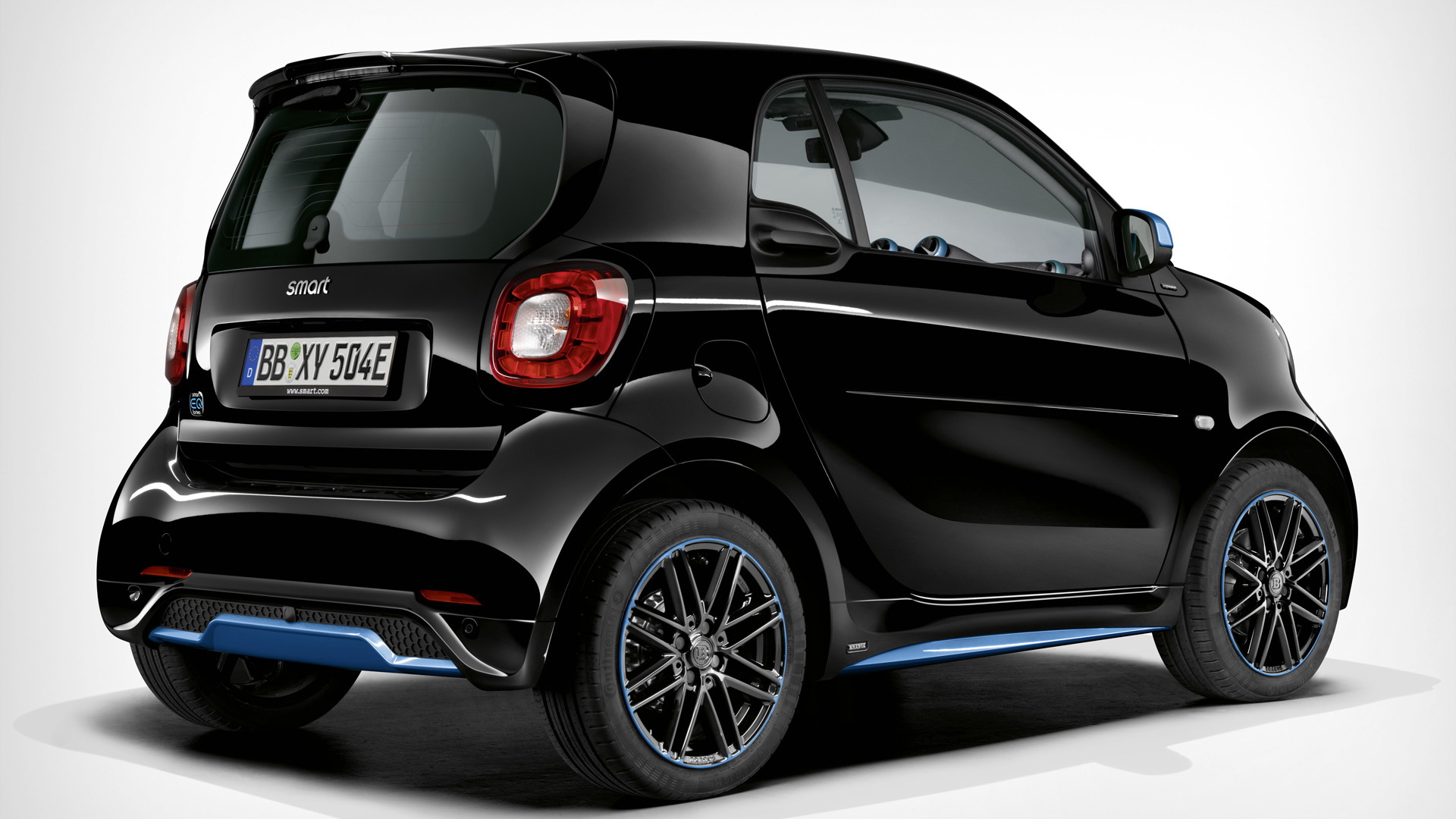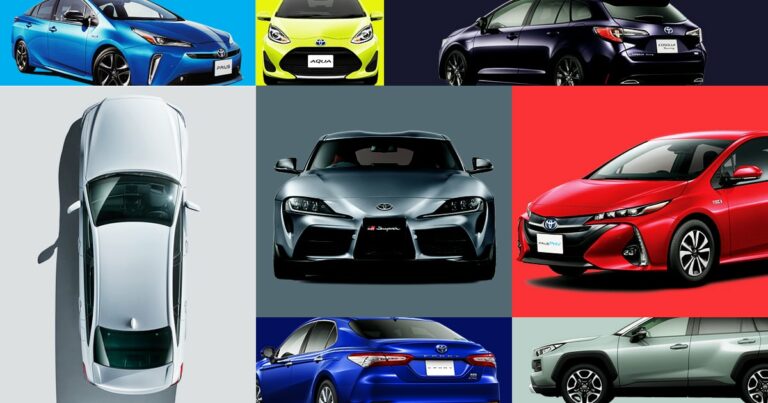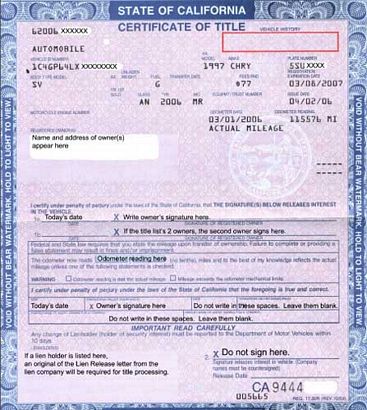Smart Car Brand: Navigating the Urban Landscape with Ingenuity
Smart Car Brand: Navigating the Urban Landscape with Ingenuity cars.truckstrend.com
In the bustling tapestry of urban life, where concrete jungles sprawl and parking spaces dwindle, one automotive brand dared to defy conventional wisdom: Smart. More than just a car, Smart represents a philosophy – a bold reimagining of personal mobility tailored specifically for the challenges and opportunities of the modern city. Born from an unlikely partnership between Mercedes-Benz and Swatch, Smart cars have carved out a unique niche, becoming synonymous with compact efficiency, distinctive design, and an unwavering commitment to navigating the complexities of urban environments with unparalleled ease. This comprehensive guide delves into the fascinating world of the Smart car brand, exploring its origins, evolution, design principles, practical benefits, and its bold leap into an all-electric future.
The Genesis of Smart – A Vision for Urban Mobility
Smart Car Brand: Navigating the Urban Landscape with Ingenuity
The story of Smart is one of innovation born out of necessity. The concept for a compact city car first emerged in the 1980s from Nicolas Hayek, the CEO of SMH (now the Swatch Group), who envisioned a stylish, customizable, and environmentally friendly vehicle. Hayek’s "Swatchmobile" concept caught the attention of Daimler-Benz (now Mercedes-Benz Group AG), leading to a groundbreaking joint venture in 1994. The brand name "Smart" itself is an acronym for "Swatch Mercedes ART," encapsulating the creative, technological, and design-focused aspirations of its founders.
The core philosophy behind Smart was radical: to create a vehicle that was incredibly small on the outside, yet surprisingly spacious and safe on the inside. It was designed to solve the perennial urban problems of traffic congestion, parking scarcity, and the growing demand for fuel efficiency. From its inception, Smart aimed to be more than just transportation; it was a statement about sustainable, intelligent urban living. This pioneering spirit laid the groundwork for a brand that would challenge the automotive industry’s traditional notions of size and status.
Iconic Models and Their Evolution
Over its history, Smart has introduced several distinctive models, but one stands as the undisputed icon: the Smart Fortwo.
- The Smart Fortwo (W450, W451, W453 Generations): Launched in 1998, the original Fortwo (initially called the Smart City-Coupe) immediately captured attention with its revolutionary two-seater, incredibly short length, and unique "Tridion" safety cell. Its rear-engine, rear-wheel-drive layout allowed for an astonishingly tight turning circle. Subsequent generations refined its design, improved comfort, and introduced more powerful and efficient engines, including early electric versions. The Fortwo has consistently been the brand’s best-seller and defining image.
- The Smart Forfour: Recognizing the need for a four-seater option, Smart introduced the Forfour in 2004, sharing its platform with the Mitsubishi Colt. After a hiatus, a second generation Forfour was launched in 2014, developed in collaboration with Renault (sharing components with the Twingo). This model aimed to offer the Smart ethos with increased practicality for small families or those needing extra space.
- Other Notable Models: Smart also experimented with niche models like the sporty Roadster and Roadster-Coupe (2003-2005), and the audacious, door-less Crossblade (2002), showcasing the brand’s willingness to push design boundaries. These models, while short-lived, contributed to Smart’s image as a creative and unconventional automaker.
- The Shift to Electric Drive: A pivotal moment in Smart’s evolution was its early adoption of electric powertrains. Starting with limited trials in 2007, Smart steadily increased the availability of its "Electric Drive" (later "EQ Fortwo" and "EQ Forfour") models. This commitment culminated in the brand’s strategic decision in 2019 to become an all-electric vehicle manufacturer, ceasing production of internal combustion engine models. This bold move positioned Smart at the forefront of urban electric mobility.

Distinctive Design and Engineering Principles
Smart cars are instantly recognizable, thanks to a design language rooted in functionality and safety.
- The Tridion Safety Cell: This is arguably the most crucial engineering feature of any Smart car. The Tridion cell is a highly rigid steel frame that forms the core structure of the vehicle. It acts like a roll cage, encasing the passenger compartment in a robust shell, providing exceptional passive safety despite the car’s diminutive size. In the event of a collision, the Tridion cell effectively dissipates impact forces around the occupants, making Smart cars remarkably safe for their class.
- Interchangeable Body Panels: A defining characteristic of early Smart models was the use of thermoplastic body panels that could be easily removed and replaced. This not only allowed for unique customization options (owners could change their car’s color panels) but also made minor collision repairs simpler and more cost-effective.
- Urban Agility and Packaging: Every aspect of a Smart car’s design is optimized for urban environments. Its incredibly short wheelbase and wide track contribute to an exceptionally tight turning radius, making U-turns and parking in confined spaces effortless. The rear-engine layout (in the Fortwo) maximizes interior space for occupants and provides a surprisingly usable trunk for its size.
- Electric Powertrains: Modern Smart vehicles, now exclusively electric, feature compact and efficient electric motors and battery packs. These powertrains deliver instant torque, making them nimble and responsive in city traffic. Charging options typically include home charging (AC) and public fast charging (DC), offering flexibility for daily use.


Benefits of Owning a Smart Car
For the right driver, a Smart car offers a compelling package of advantages:
- Unparalleled Parking Ease: This is perhaps the most significant benefit. The Fortwo can famously park perpendicular to the curb in many parallel parking spots, and its compact dimensions make finding spaces in congested areas a breeze.
- Exceptional Maneuverability: With a turning circle often comparable to a golf cart, Smart cars can navigate narrow streets, tight corners, and crowded car parks with remarkable agility.
- Fuel Efficiency / Electric Savings: Older ICE models were highly fuel-efficient. Modern electric Smart cars offer significant savings on fuel costs, benefit from lower maintenance (fewer moving parts), and often qualify for tax incentives or reduced road tolls in various regions.
- Environmental Friendliness: As an all-electric brand, Smart cars produce zero tailpipe emissions, contributing to cleaner urban air and a reduced carbon footprint.
- Surprising Safety: Despite their small stature, the Tridion safety cell and comprehensive airbag systems ensure a high level of occupant protection, often earning respectable crash test ratings.
- Unique Style and Community: Smart cars stand out from the crowd. Their distinctive design appeals to those who value individuality. Furthermore, a vibrant community of Smart owners exists worldwide, celebrating the brand’s unique appeal.
- Low Running Costs (for EVs): Beyond "fuel" savings, electric vehicles generally have fewer wear-and-tear parts than ICE cars, leading to lower long-term maintenance expenses.
Important Considerations and Potential Challenges
While Smart cars offer many benefits, it’s essential to consider their limitations:
- Limited Passenger and Cargo Space: The Fortwo, by definition, only seats two, and even the Forfour has limited rear legroom and cargo capacity compared to larger hatchbacks. This makes them unsuitable as primary family vehicles or for frequent long-distance travel requiring significant luggage.
- Highway Performance (Older Models): While capable of highway speeds, older, smaller-engined Smart cars could feel less stable or refined at high speeds compared to larger vehicles. Newer, more powerful electric models mitigate this concern considerably.
- Price Point: Historically, Smart cars could be perceived as expensive for their size, especially when new. Their premium positioning, driven by Mercedes-Benz engineering, often meant a higher sticker price than some competitors.
- Range Anxiety (Early EVs): Older electric Smart models had relatively limited range, which could be a concern for some drivers. Newer electric Smart models boast significantly improved ranges, making them more practical for daily use.
- Specialized Parts and Servicing: While general maintenance is straightforward, some Smart-specific parts or repairs might require a specialized mechanic or dealership, potentially impacting convenience and cost.
The All-Electric Future of Smart
The Smart brand has undergone a significant transformation, embracing an entirely electric future. In 2020, Smart became a 50:50 joint venture between Mercedes-Benz Group AG and Geely Holding Group (a Chinese multinational automotive company that also owns Volvo and Lotus). This strategic partnership signals a new era for Smart, moving beyond the compact Fortwo and Forfour to introduce larger, more versatile electric vehicles.
- New Platform and Design: The new generation of Smart EVs, starting with the Smart #1 (pronounced "hashtag one") and Smart #3, are built on Geely’s Sustainable Experience Architecture (SEA) platform. These models represent a significant departure from the brand’s microcar roots, evolving into compact SUVs and SUV-coupes, offering more interior space, advanced technology, and increased range.
- Advanced Technology: The new Smart EVs feature cutting-edge infotainment systems, advanced driver-assistance systems (ADAS), over-the-air (OTA) updates, and premium interiors, reflecting their more upscale positioning.
- Global Expansion: The Geely partnership also aims to expand Smart’s global reach, particularly in key electric vehicle markets like China and Europe, and potentially beyond. This expansion positions Smart to be a significant player in the evolving urban and suburban electric mobility landscape.
Practical Advice and Actionable Insights
- Who is a Smart Car For? Smart cars are ideal for urban dwellers, commuters, individuals or couples seeking a second car for city errands, or eco-conscious drivers prioritizing efficiency and a small footprint.
- Test Drive Experience: When test driving, especially an older model, focus on its maneuverability, ease of parking, and how it handles in typical urban traffic. For new EVs, pay attention to range, charging options, and the integration of technology.
- Charging Infrastructure: If considering an electric Smart, assess your access to home charging (Level 2 charger is recommended for convenience) and public charging stations in your area.
- Consider Used vs. New: For those interested in the classic Fortwo experience, the used market offers excellent value. For cutting-edge EV technology and more space, the new generation of Smart #1 and #3 models are the way to go.
- Maintenance: While Smart cars are generally reliable, adhere to the manufacturer’s recommended service schedule. For electric models, maintenance is typically simpler, focusing on tires, brakes, and software updates.
Smart Car Brand: Estimated Price Table (Illustrative)
Please note: Prices for new Smart vehicles vary significantly by market (e.g., Europe vs. Asia), trim level, optional features, and local taxes/incentives. Used car prices depend heavily on year, mileage, condition, and location. The table below provides estimated starting price ranges for illustrative purposes only.
| Model | Type | Power/Range (Approx.) | New Price Range (Est. Base) | Used Price Range (Est.) | Key Features |
|---|---|---|---|---|---|
| Smart Fortwo (ICE, older gens) | City Car | 0.8L-1.0L Petrol | N/A (Discontinued new) | €3,000 – €12,000 / $3,500 – $15,000 | 2-seater, Tridion cell, compact, easy parking. |
| Smart Forfour (ICE, older gens) | Hatchback | 1.0L-1.5L Petrol | N/A (Discontinued new) | €4,000 – €15,000 / $4,500 – $18,000 | 4-seater, compact, city-friendly. |
| Smart EQ Fortwo (Electric) | City EV | 60 kW (82 hp), 130 km | N/A (Discontinued new, limited stock) | €10,000 – €20,000 / $12,000 – $25,000 | All-electric, ultra-compact, zero emissions, ideal for urban commutes. |
| Smart EQ Forfour (Electric) | Hatchback | 60 kW (82 hp), 129 km | N/A (Discontinued new, limited stock) | €11,000 – €22,000 / $13,000 – $27,000 | All-electric, 4-seater, urban EV. |
| Smart #1 (Electric SUV) | Compact SUV | 200 kW (272 hp), 440 km | €38,000 – €49,000 / $42,000 – $55,000 | N/A (Too new for used market) | Larger, premium EV, advanced tech, spacious interior, longer range. |
| Smart #3 (Electric SUV-Coupe) | SUV-Coupe | 200 kW (272 hp), 455 km | €43,000 – €55,000 / $47,000 – $60,000 | N/A (Too new for used market) | Sportier design, similar features to #1, more emphasis on style. |
Note: Prices are highly indicative. Always check local dealerships and used car markets for precise and current pricing.
Frequently Asked Questions (FAQ)
Q1: Is Smart part of Mercedes-Benz?
A1: Historically, Smart was a brand of Daimler AG (now Mercedes-Benz Group AG). Since 2020, Smart has become a 50:50 joint venture between Mercedes-Benz Group AG and Geely Holding Group, with Mercedes-Benz designing the cars and Geely providing the engineering and manufacturing.
Q2: Are Smart cars safe despite their small size?
A2: Yes. Smart cars are designed with safety as a top priority. The patented Tridion safety cell acts as a rigid "safety cage" around occupants, helping to protect them in a collision. They consistently achieve good ratings in crash tests for their class.
Q3: How many people can fit in a Smart car?
A3: The iconic Smart Fortwo (and EQ Fortwo) is a two-seater. The Smart Forfour (and EQ Forfour) can seat four people. The newer Smart #1 and #3 models are designed to comfortably seat five.
Q4: Are Smart cars good for highway driving?
A4: Older Smart Fortwo models, while capable of highway speeds, were primarily designed for urban environments and could feel less refined on long highway journeys. Newer electric Smart models (like the EQ Fortwo, #1, and #3) offer significantly better performance and comfort for highway driving due to more power, better suspension, and increased stability.
Q5: What is the range of an electric Smart car?
A5: The range varies significantly by model. The older Smart EQ Fortwo typically had a real-world range of around 100-130 km (60-80 miles). The newer Smart #1 and #3 models, with larger batteries, offer significantly improved ranges, often exceeding 400 km (250 miles) on a single charge (WLTP cycle).
Q6: Are Smart cars expensive to maintain?
A6: Generally, maintenance costs for Smart cars are reasonable. For older ICE models, general servicing is comparable to other small cars. For electric models, maintenance is often lower due to fewer moving parts (no oil changes, spark plugs, etc.), primarily focusing on tires, brakes, and software updates. Specific Smart-branded parts can sometimes be pricier.
Q7: Why did Smart go all-electric?
A7: Smart’s decision to go all-electric reflects a strategic pivot towards sustainable urban mobility and the growing demand for zero-emission vehicles. It aligns with global efforts to combat climate change and positions the brand for future growth in the EV market.
Q8: Where are Smart cars made?
A8: Historically, Smart Fortwo models were manufactured in Hambach, France. The newer generation of Smart electric vehicles (like the #1 and #3) are manufactured in China as part of the joint venture with Geely.
Conclusion
The Smart car brand embodies a remarkable journey of automotive innovation, from its quirky beginnings as a niche city car to its current iteration as a leading force in urban electric mobility. It dared to be different, challenging the "bigger is better" mentality and proving that intelligence in design and engineering could yield highly practical, safe, and desirable vehicles for the urban landscape.
As Smart embraces its all-electric future with a new generation of more spacious and technologically advanced vehicles, it continues to champion efficiency, sustainability, and intelligent design. Whether zipping through congested streets in a compact Fortwo or embarking on longer journeys in a versatile Smart #1, the brand remains committed to its founding principle: providing smart solutions for modern drivers navigating an ever-evolving world. Smart cars are not just a mode of transport; they are a statement of purpose, offering a compelling blend of practicality, personality, and a vision for a cleaner, more accessible urban future.






